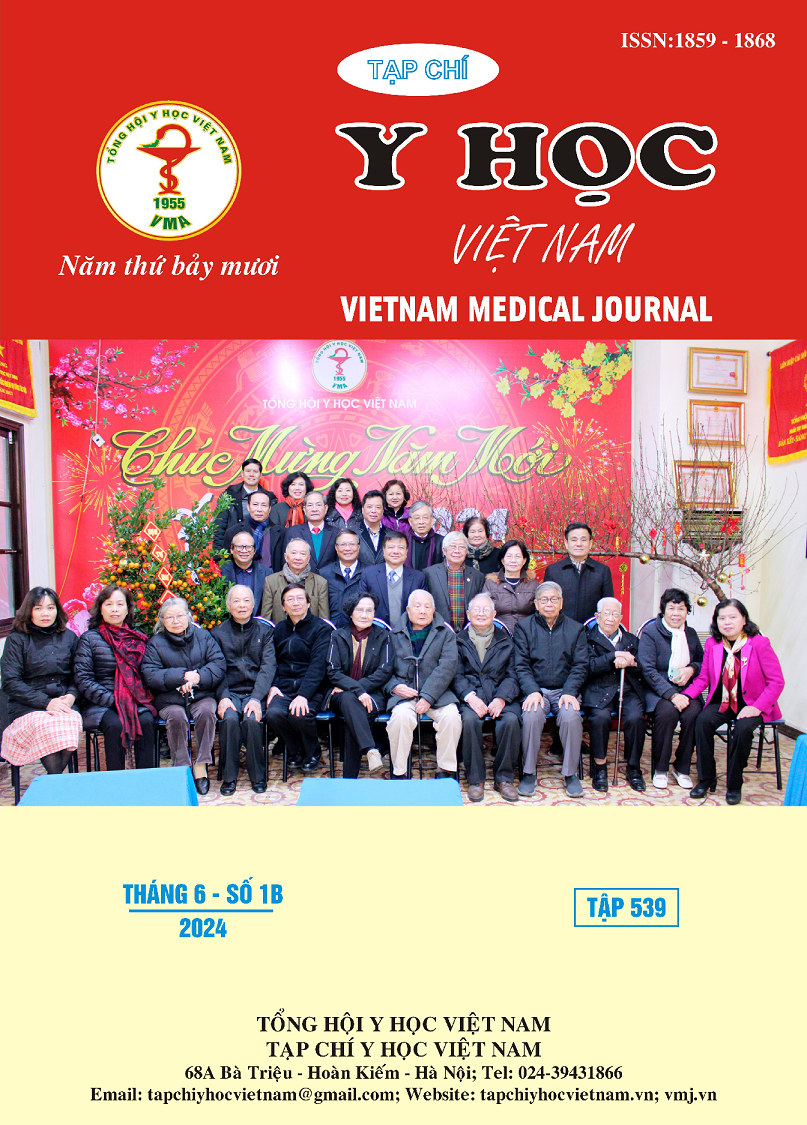ĐẶC ĐIỂM LÂM SÀNG CẬN LÂM SÀNG BỆNH NHÂN ĐAU BÌU MẠN TÍNH CẦN CAN THIỆP PHẪU THUẬT
Nội dung chính của bài viết
Tóm tắt
Đặt vấn đề: Đau bìu mạn tính là một trong những cơn đau phổ biến nhất của hệ tiết niệu khiến bệnh nhân đến khám và điều trị. Nghiên cứu nhằm khảo sát đặc điểm lâm sàng bệnh nhân đau bìu mạn tính nặng có chỉ định can thiệp phẫu thuật. Đối tượng và phương pháp nghiên cứu: Nghiên cứu mô tả hồi cứu. Tất cả những bệnh nhân đau bìu mạn tính có chỉ định phẫu thuật tại khoa nam học, bệnh viện Bình Dân từ 01/01/2022 đến 31/11/2023. Kết quả: Có 39 bệnh nhân đau bìu mạn tính được phẫu thuật. Tuổi trung bình 24,2 ± 4,3, thời gian đau 2.3 ± 1.6 năm. Vị trí đau: bìu 41,3% tinh hoàn-mào tinh 47,8%, thừng tinh 24,6%, bẹn 15,1%. Nguyên nhân đau: hậu viêm tinh hoàn mào tinh 45,3% chiếm đa số trường hợp. Các nguyên nhân khác: sau phẫu thuật giãn tĩnh mạch tinh 32.3 %, sau chấn thương 22.6%. Thang điểm đau điểm đau NRS trước mổ 6.8 ±2,3. 13/39 bệnh nhân có thang điểm đau nặng (7-10). Chất lượng cuộc sống bệnh nhân Quality of life (QOL) bệnh nhân đau vừa (thang điểm đau NRS 1-6) 4.6 ± 4.0 và 6.75 ± 1.1 ở bệnh nhân đau nặng (NRS 7-10). Có 25 (80,6 %) bệnh nhân ghi nhận cơn đau ảnh hưởng đến hoạt động làm việc. Bệnh nhân có kích thước tinh hoàn nhỏ là 43,5%, Độ giãn tĩnh mạch tinh trên siêu âm: 3.4±1,2 mm. Nồng độ Testosterone thấp hơn giá trị trung bình 37,5% bệnh nhân. Kết luận: Đau bìu mạn tính đa phần xảy ra ở bệnh nhân trẻ với than điểm đau tương đối lớn. Nguyên nhân gây đau bìu mạn tính cũng góp phần ảnh hưởng đến kích thước và chức năng nội tiết tinh hoàn ảnh hưởng đến chất lượng cuộc sống. Vì vậy bệnh lý đau bìu mạn tính cần được quan tâm can thiệp sớm nếu có thể khi ảnh hưởng đến chất lượng cuộc sống bệnh nhân.
Chi tiết bài viết
Từ khóa
đau bìu mạn tính, đặc điểm, chất lượng cuộc sống
Tài liệu tham khảo
2. Ciftci H, Savas M, Yeni E, Verit A, Topal U: Chronic Orchialgia and Associated Diseases. Curr Urol 2010;4:67-70. doi: 10.1159/000253415
3. Davis BE, Noble MJ, Weigel JW, Foret JD, Mebust WK. Analysis and management of chronic testicular pain. J Urol. 1990;143(5):936-939. doi:10.1016/s0022-5347(17)40143-1
4. Passavanti MB, Pota V, Sansone P, Aurilio C, De Nardis L, Pace MC. Chronic Pelvic Pain: Assessment, Evaluation, and Objectivation. Pain Res Treat. 2017;2017:9472925. doi: 10.1155/ 2017/9472925. Epub 2017 Nov 20. PMID: 29359045; PMCID: PMC5735788.
5. Peterson AC, Lance RS, Ruiz HE. Outcomes of varicocele ligation done for pain. J Urol. 1998;159(5):1565-1567. doi:10.1097/00005392-199805000-00043
6. Strebel RT, Leippold T, Luginbuehl T, Muentener M, Praz V, Hauri D. Chronic scrotal pain syndrome: management among urologists in Switzerland. Eur Urol. 2005;47(6):812-816. doi: 10.1016/j.eururo.2005.01.003
7. Valencic M. Re: Granitsiotis P, Kirk D. Chronic testicular pain: an overview. Eur Urol 2004; 45:430-6. Eur Urol. 2005;47(5):720. doi:10.1016/ j.eururo.2004.10.023
8. Woolf CJ, Salter MW. Neuronal plasticity: increasing the gain in pain. Science. 2000 Jun 9;288(5472): 1765-9. doi: 10.1126/science. 288.5472.1765. PMID: 10846153.


